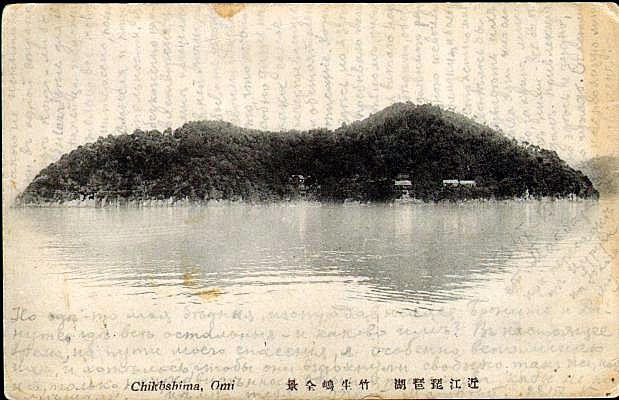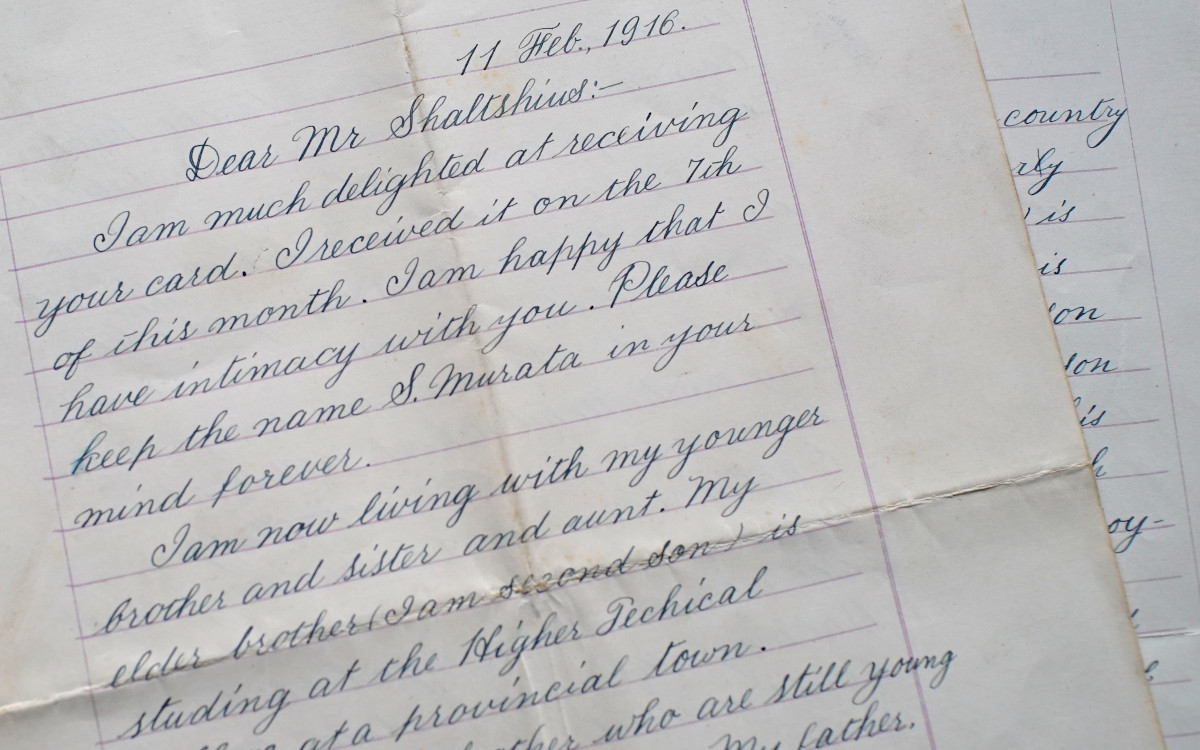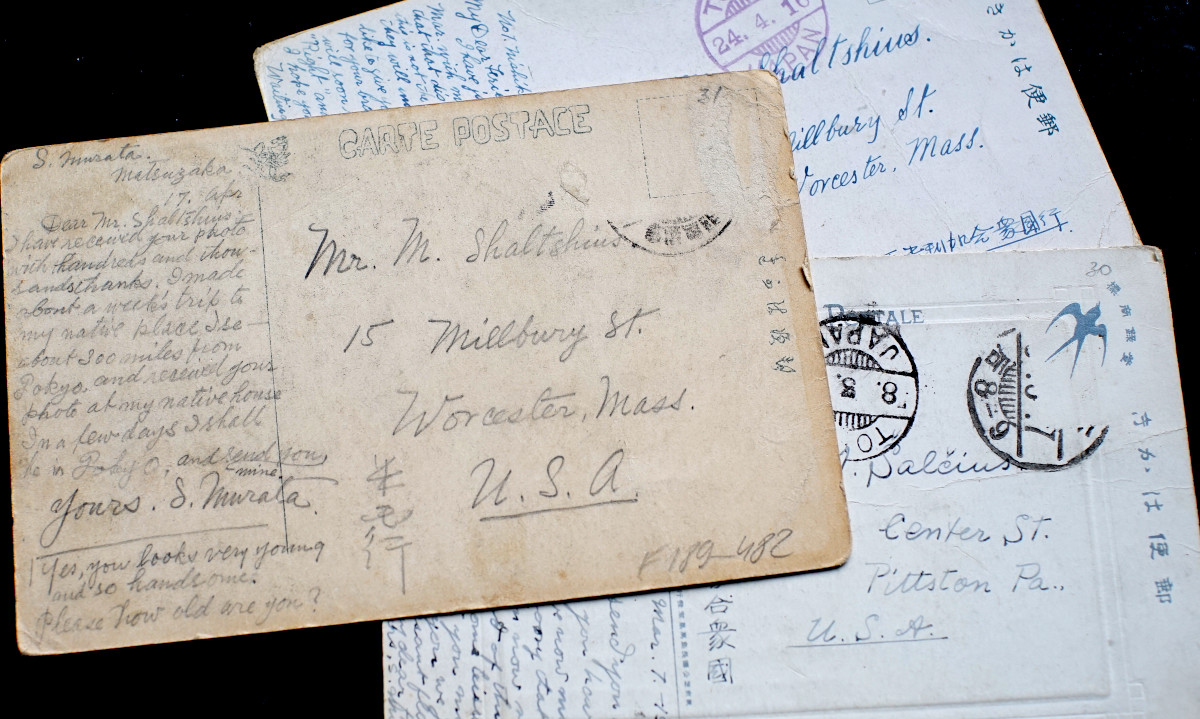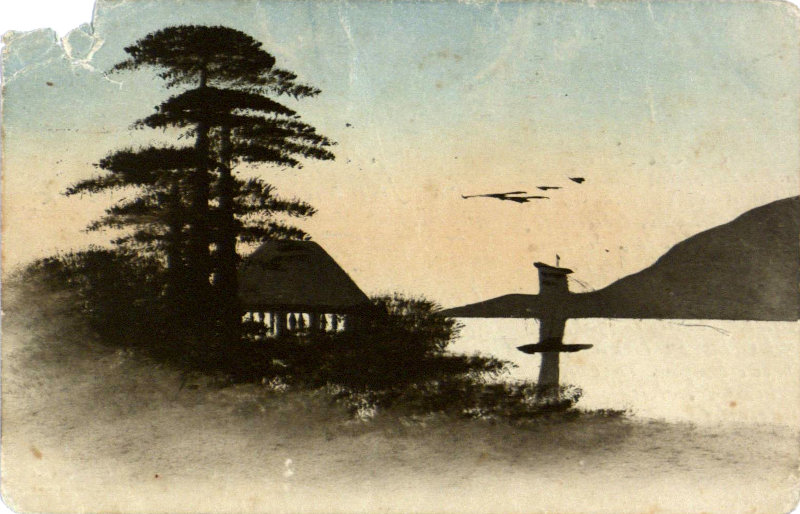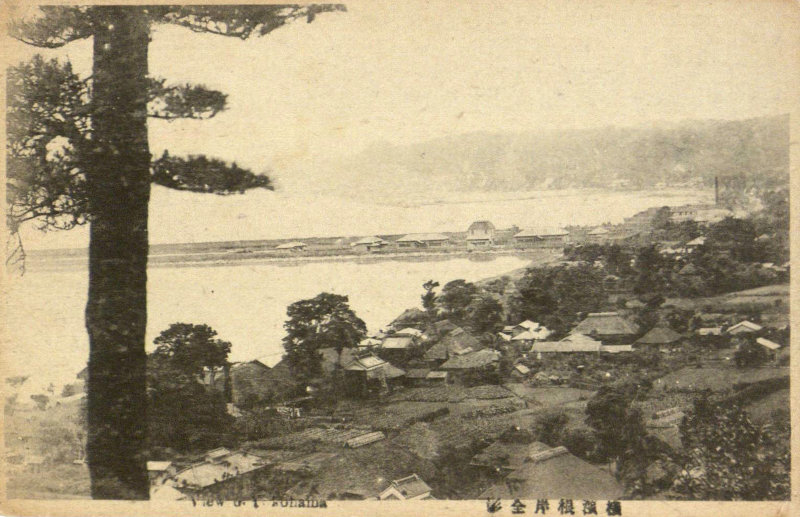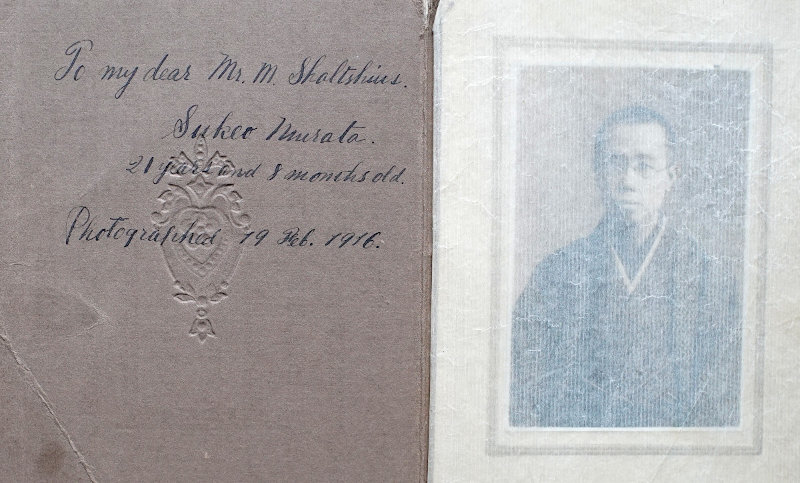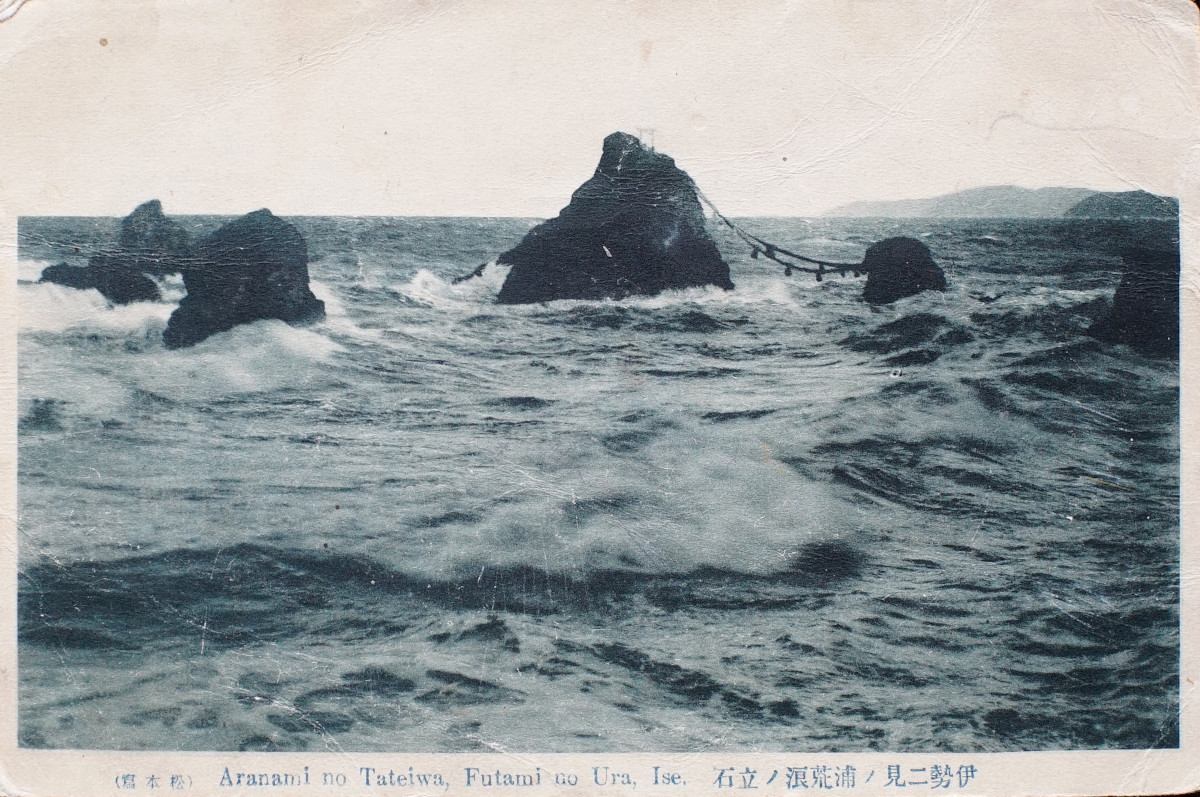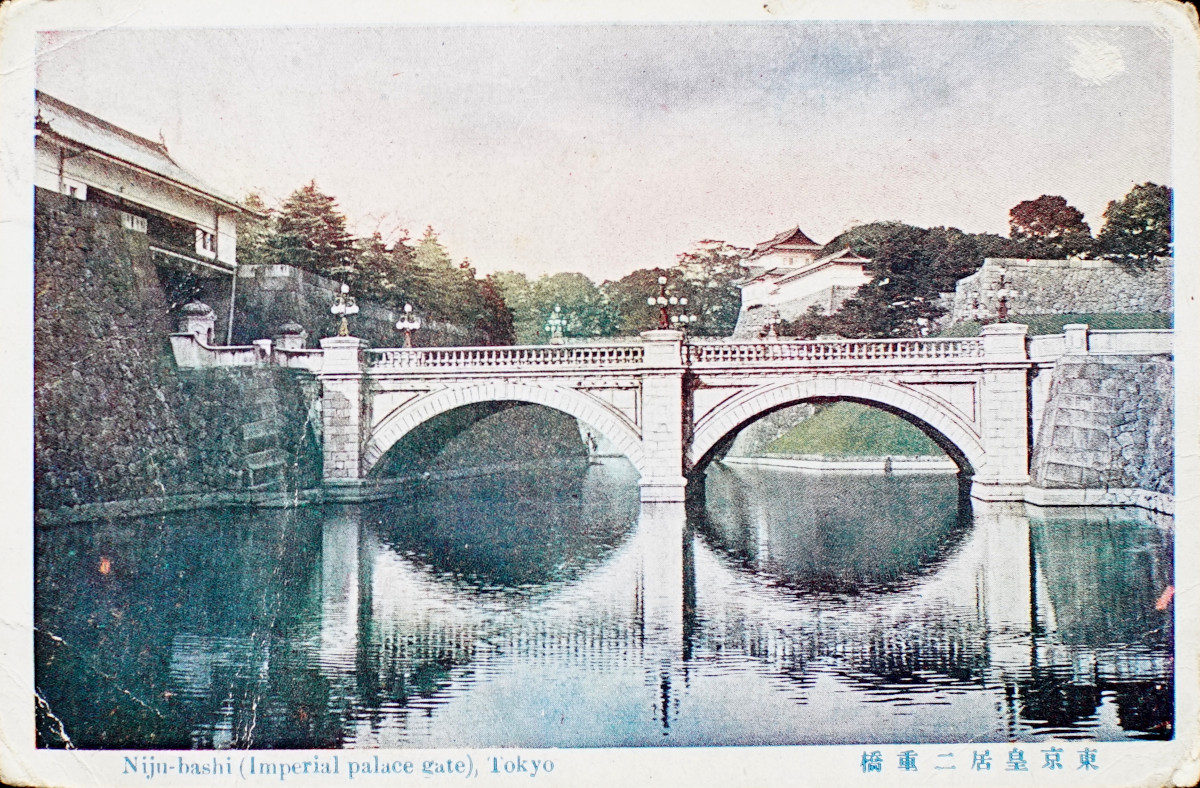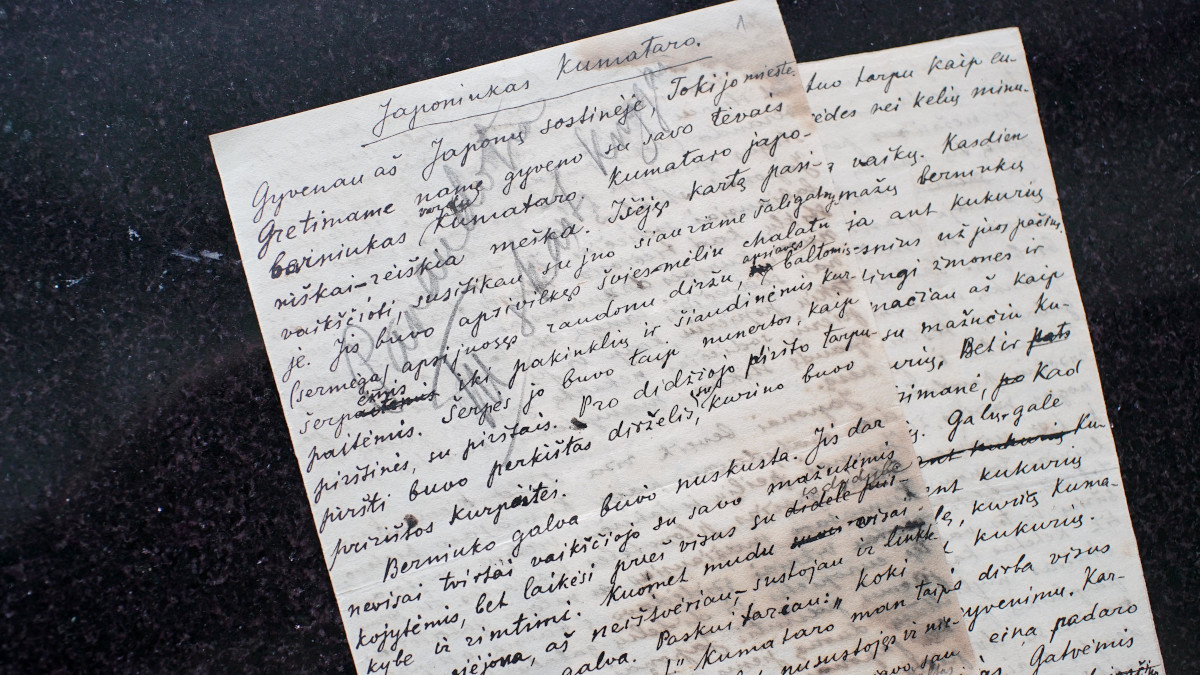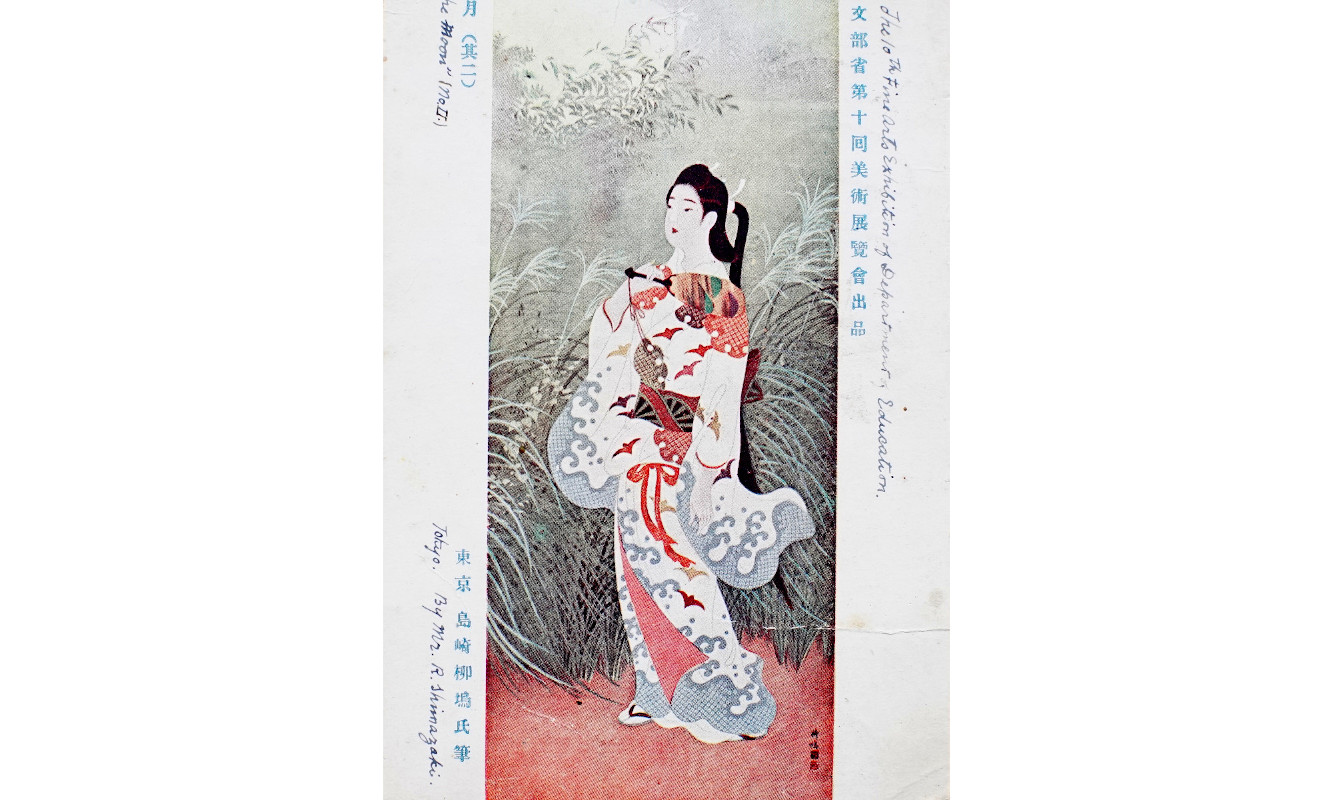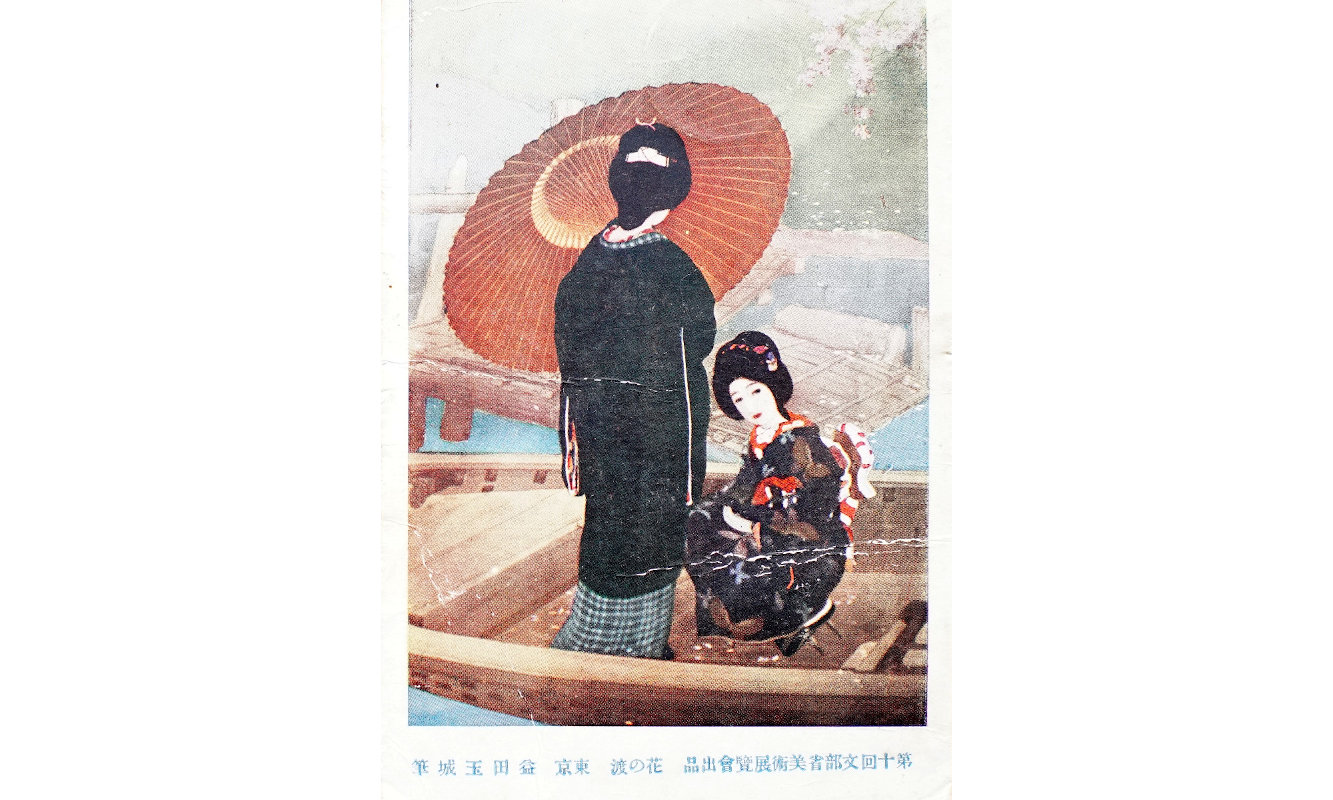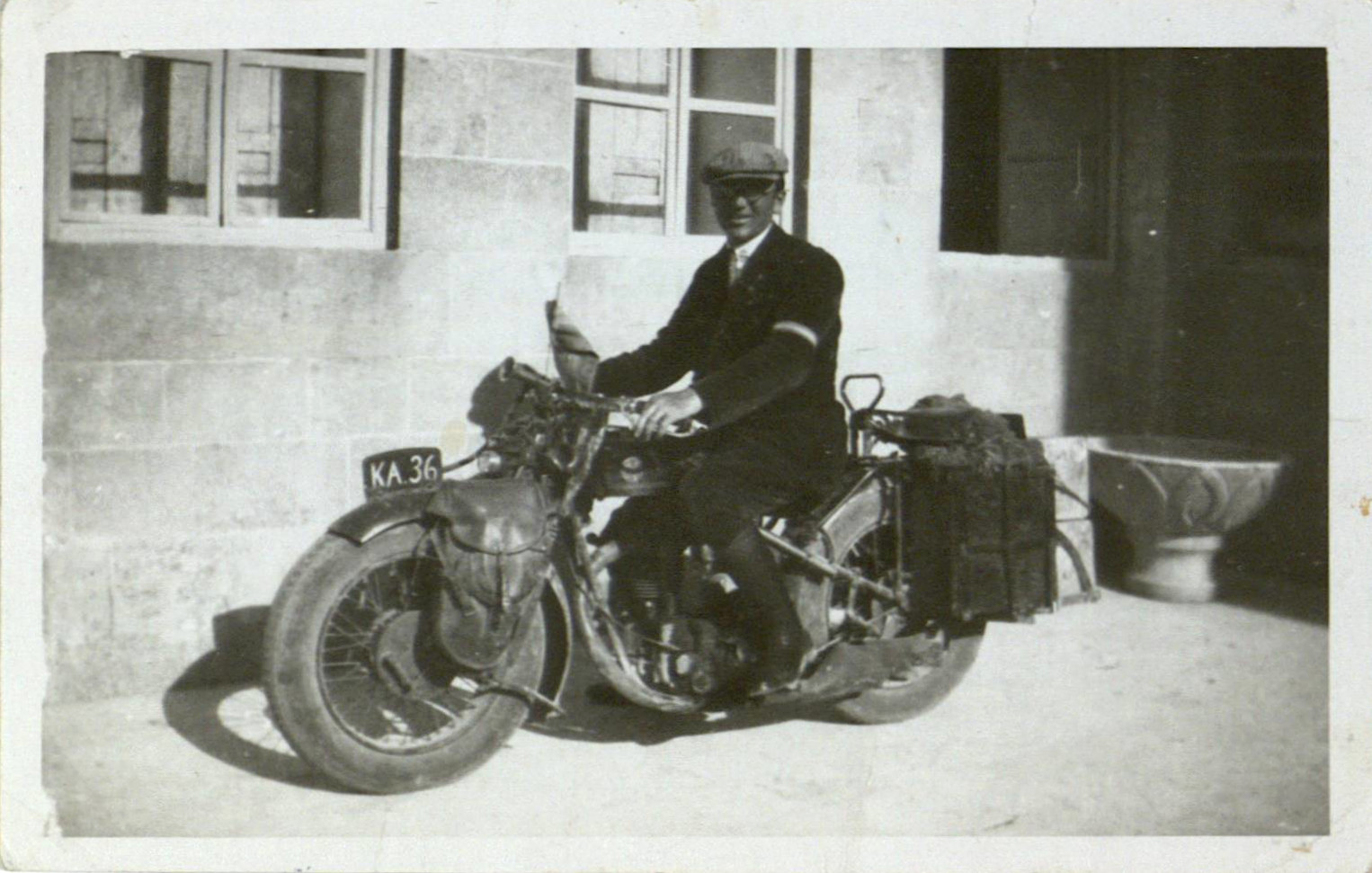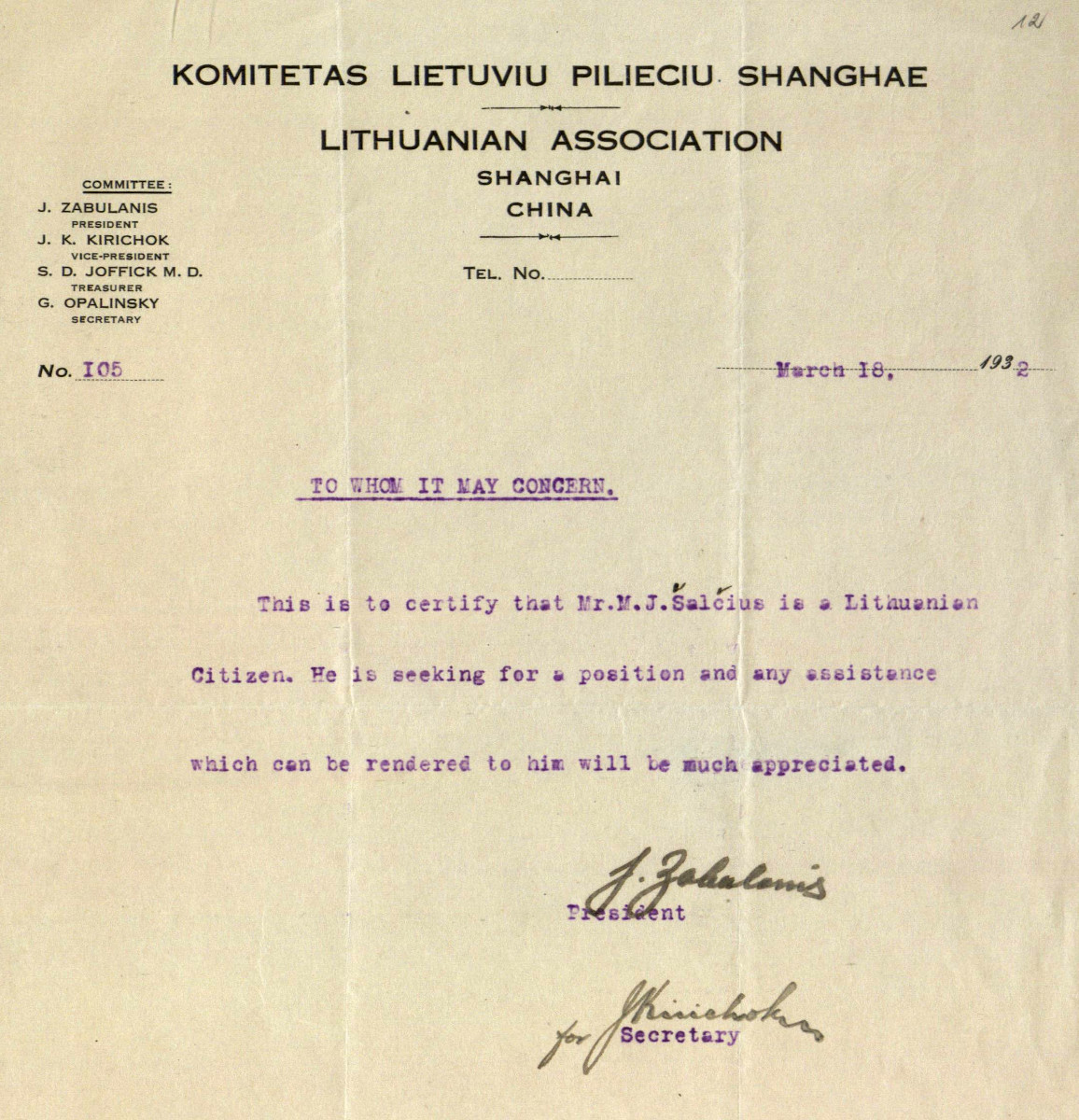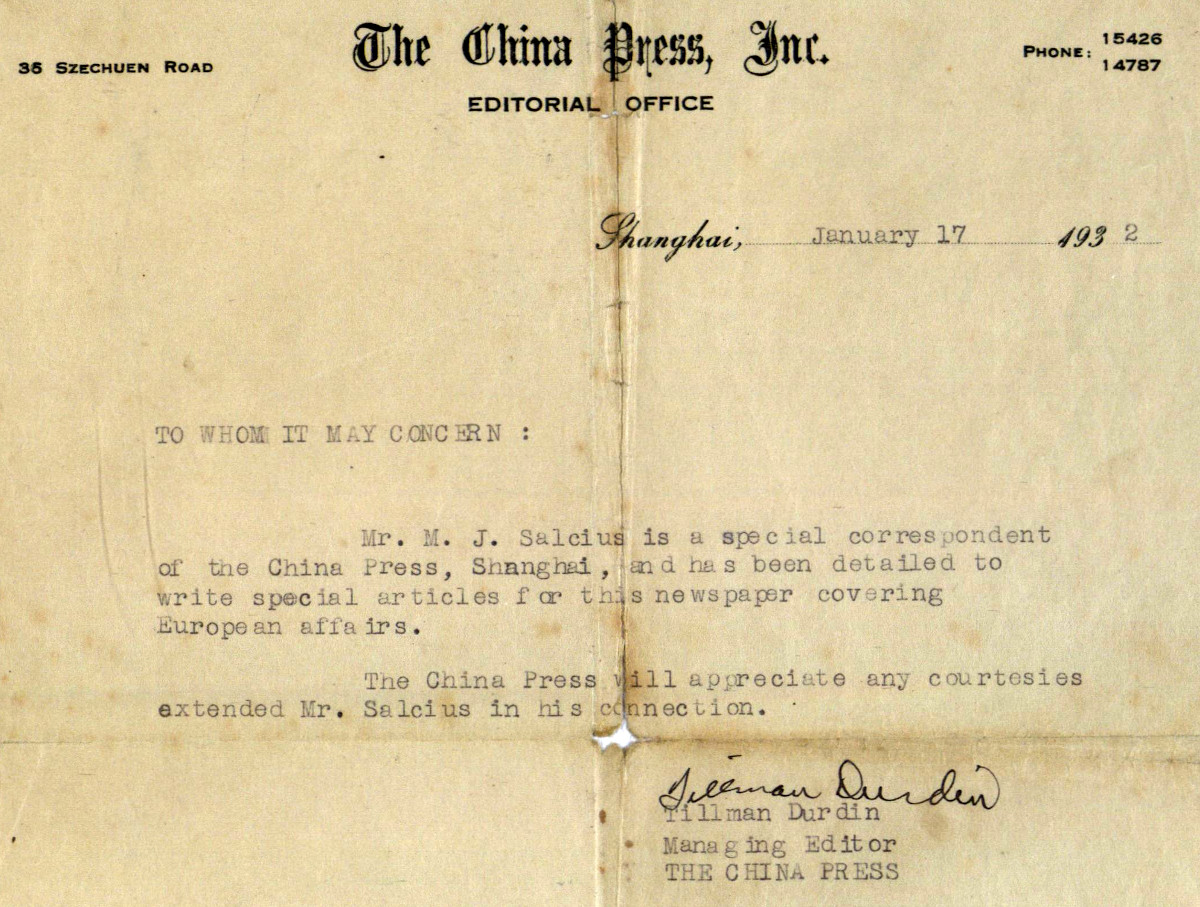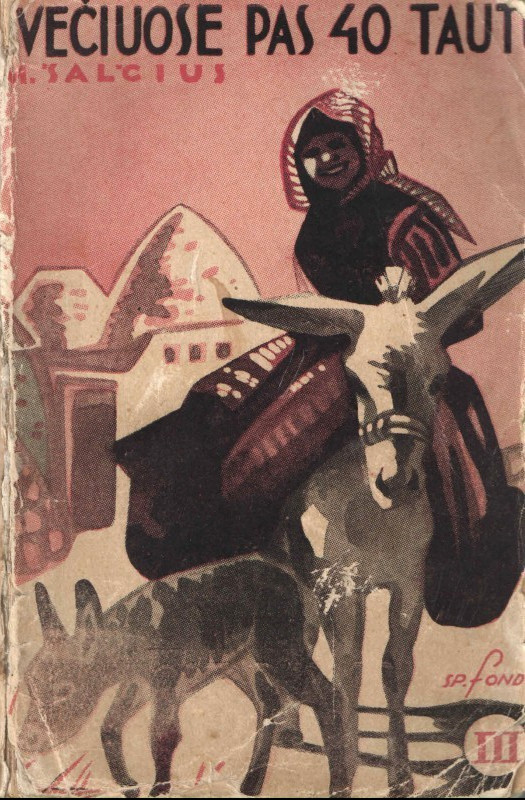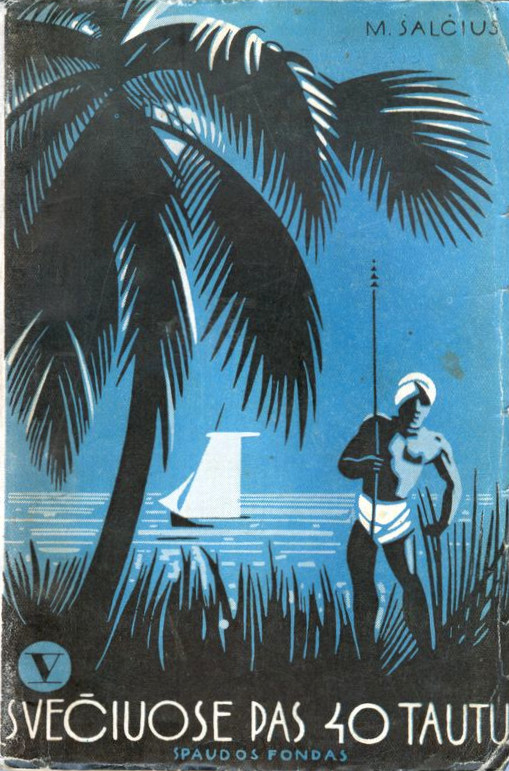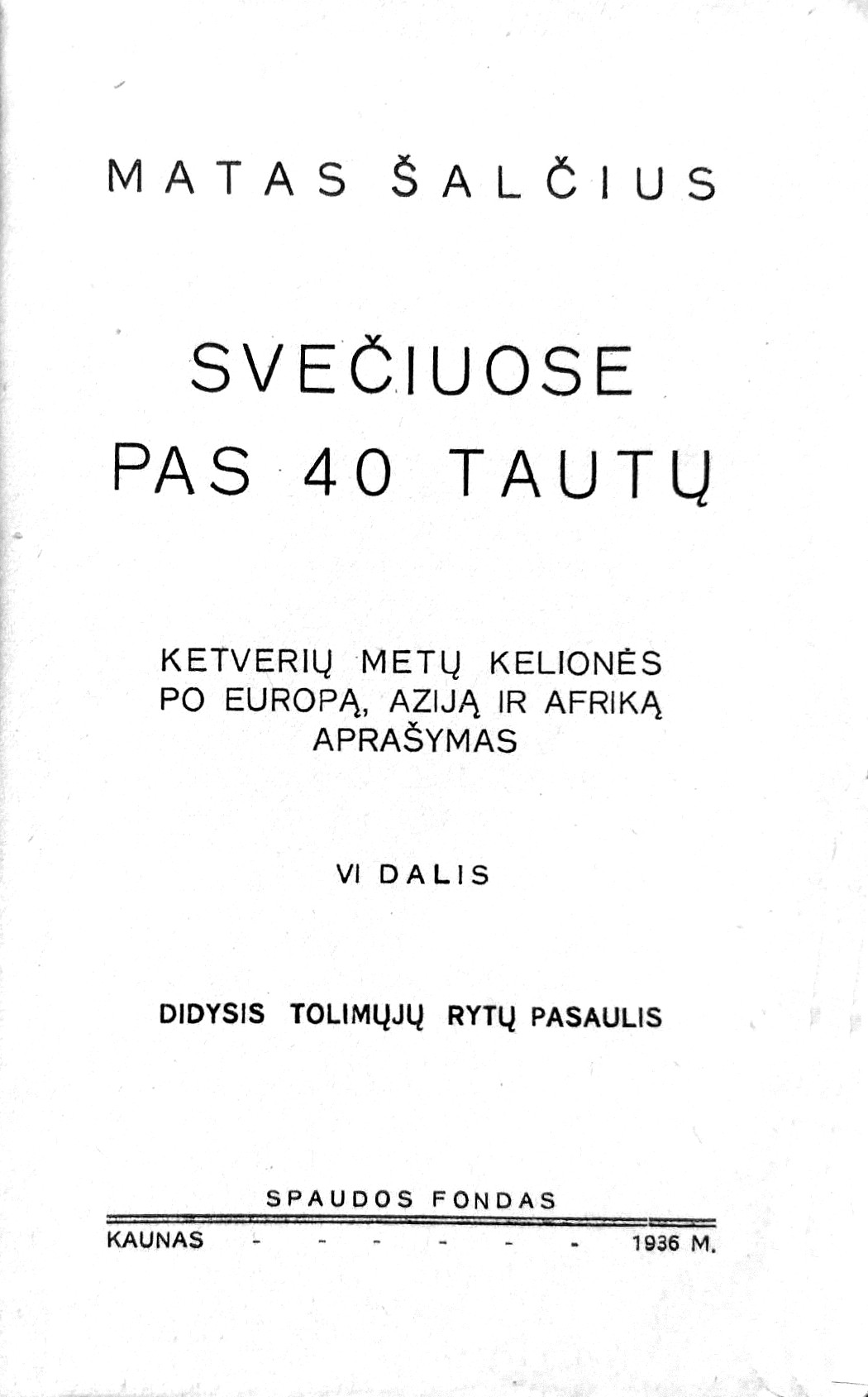Matas Šalčius
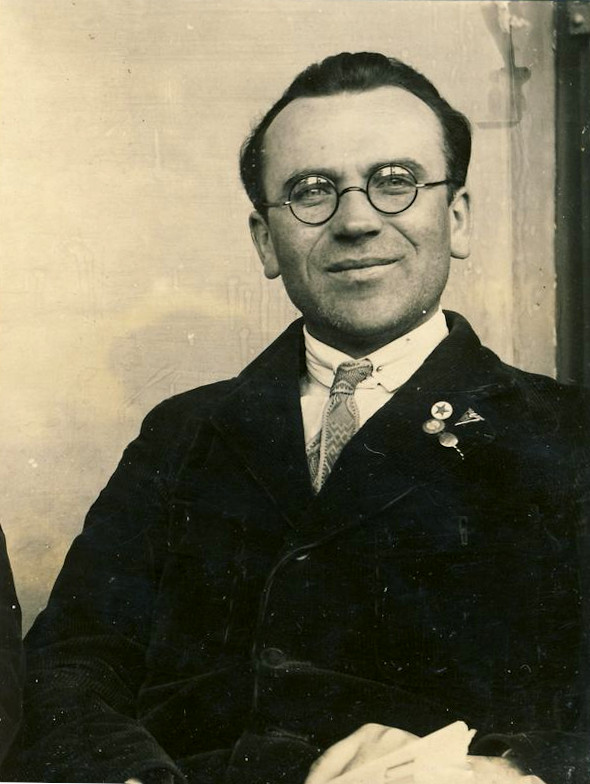
Matas Šalčius was one of the most colorful personalities in the interwar period of Lithuania. A teacher, journalist, translator, active founder of public organizations, creator, and supporter of the young Republic of Lithuania. In addition, M. Šalčius is famous for his passion for traveling. He visited distant lands, including East Asian countries, and spent 12 years of his short life abroad. When it comes to Japan, M. Šalčius went there three times.
Impressions of the journeys were recorded in his diary, letters, newspaper articles, and travel books, which were very popular at that time.
(Memorial Museum of A. Baranauskas ir A. Vienuolis-Žukauskas, VŽM F 1019)
Life of twists and turns
It is impossible to list all positions and career moves of M. Šalčius in one intake of breath. Despite the fact that he was born in a small village, M. Šalčius became an open-minded person with great ambitions. Vivacious personality did not let him stay in one place longer and encouraged him to develop new plans, which sometimes looked quite crazy for other people. From today's point of view it seems that M. Šalčius was a curious citizen of the world, who had a close connection to Lithuania.
(click on dates to see more information)
-
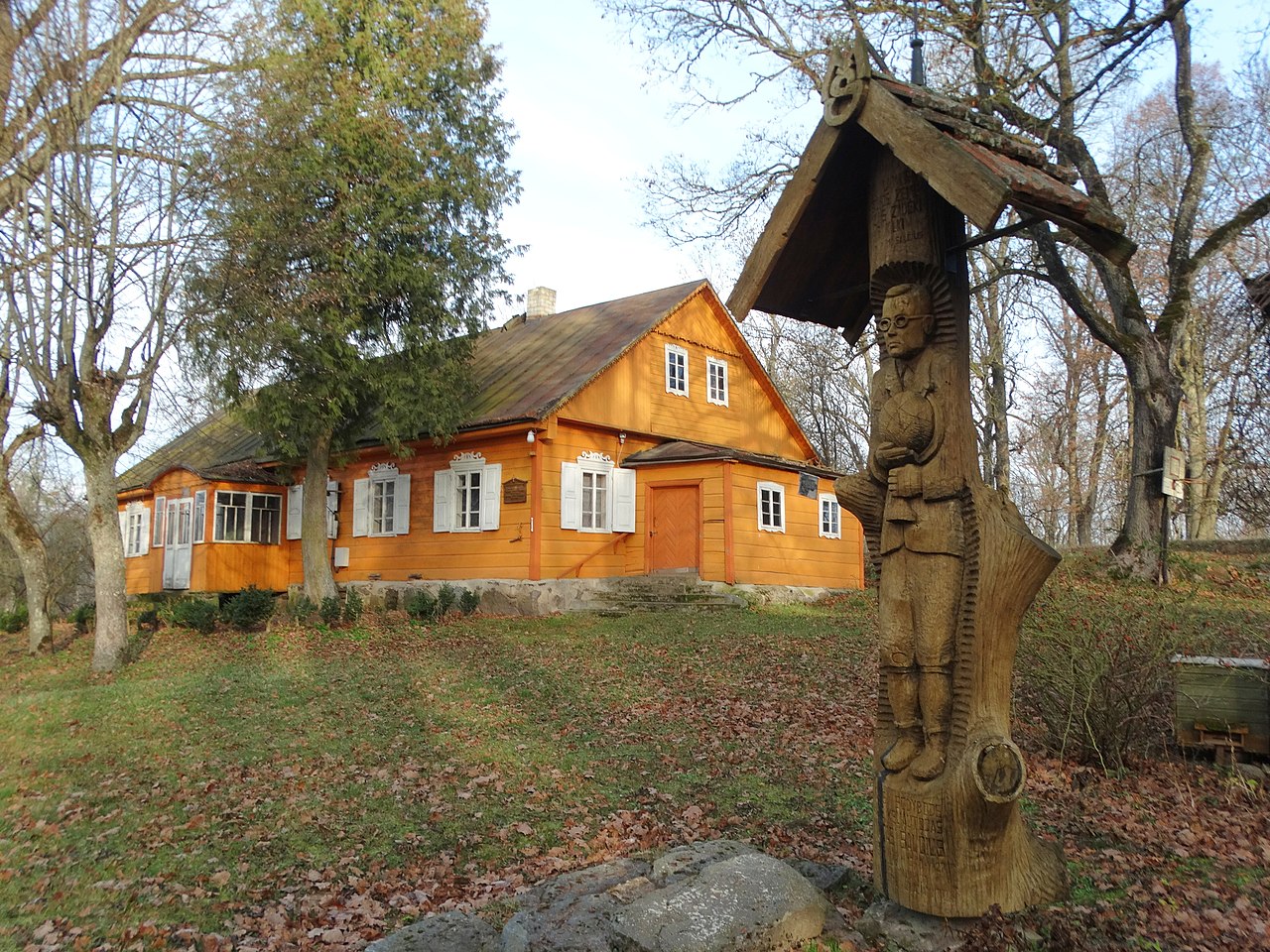 2 September, 1890, Born in Čiudiškiai village
2 September, 1890, Born in Čiudiškiai villageM. Šalčius had a big family – he had six brothers and two sisters. Parents Pranė and Juozas Šalčiai were farmers.
(Wikimedia/Vilensija)
-
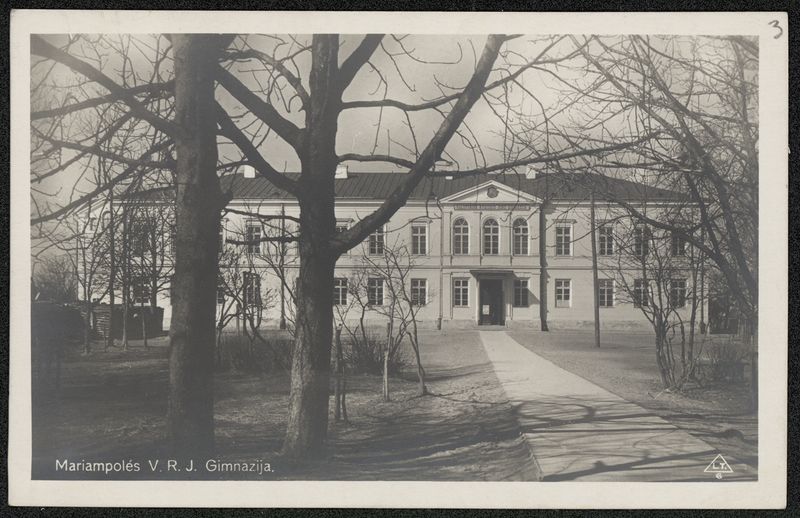 In 1901, started to study in Marijampolė Gymnasium
In 1901, started to study in Marijampolė GymnasiumEight years old M. Šalčius had private lessons in Prienai. At the age of eleven, he started to attend Marijampolė Gymnasium. After graduation, M. Šalčius finished teacher training courses established by Saulė Educational Society.
(M. K. Čiurlionis Art Gallery archive, ČDM M 2-27-1/3)
-
 In 1908, started to teach
In 1908, started to teachM. Šalčius had worked as a teacher intermittently until 1922 in various schools in Skuodas, Mosėdis, Vytogala, Linkuva, Kaunas.
-
 In 1915, traveled to the USA
In 1915, traveled to the USAAt the end of 1914, M. Šalčius was drafted to the Imperial Russian Army. He did not want to fight for Russia and ran to the USA through Siberia and Japan in 1915. He lived in Boston and participated actively in activities of the Lithuanian diaspora, especially in the Lithuanian press.
(Martynas Mažvydas National Library of Lithuania, C10002488991)
-
 In 1919, returned to Lithuania
In 1919, returned to LithuaniaAfter the announcement of the independence of Lithuania, M. Šalčius decided to leave the USA and return back in the same way: he went to Japan and from there he traveled to Lithuania through Siberia. Firstly, he worked as a teacher but soon he was involved in other activities, worked actively in newspapers.
(Martynas Mažvydas National Library of Lithuania, C10002478095)
-
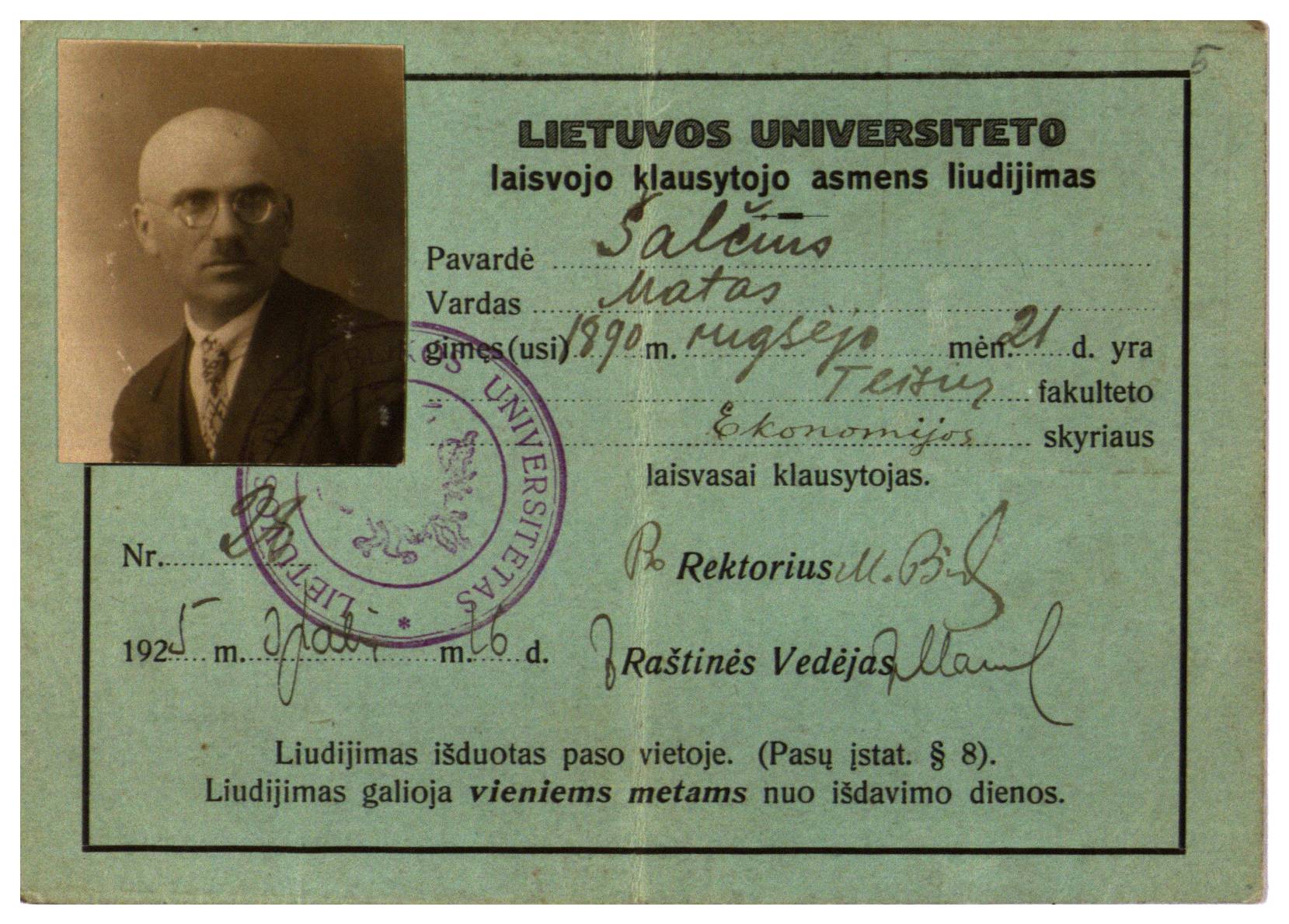 In 1924, studied at the university
In 1924, studied at the universityDuring 1924-1928 M. Šalčius studied in the Faculty of Law in the University of Lithuania (now – Vytautas Magnus University).
(Martynas Mažvydas National Library of Lithuania, C10002478090)
-
 In 1929, contributed to the establishment of the Tourism Union and started his great journey
In 1929, contributed to the establishment of the Tourism Union and started his great journeyM. Šalčius promoted tourism in Lithuania in various ways and in 1929 he contributed to the establishment of the Tourism Union. In the late autumn of that year, together with Antanas Poška, he had started his biggest journey by motorbike. He had traveled for four years and had an opportunity to visit Japan again.
-
 1936: the second great journey
1936: the second great journeyInspired by his journey to the East in 1929-1933, M. Šalčius planned to visit this time the West, especially countries in South America. Firstly, he had stayed in Argentina, then he traveled to Chile, Uruguay, Brazil, Paraguay, Bolivia.
(M. Šalčius in San Paulo, Brazil)
-
 Died of a disease on the 26th of May 1940, in Bolivia
Died of a disease on the 26th of May 1940, in BoliviaSadly, but Bolivia was the last country of the second great journey of M. Šalčius – he got acute inflammation and died suddenly in the town of Guayaramerín located at the board with Brasilia. There he was buried.
("Trimitas", 1940, June 13)
First visits to Japan
M. Šalčius was a harsh critic of Imperial Russia; therefore, he tried to avoid military service in the Imperial Russia Army after World War I had broken out. In 1914 he was included in the list of conscripts and transferred to Moscow; however, in the spring of 1915, he found a way to run out, took the Trans-Siberian Railway, and traveled to the East. Finally, he reached Vladivostok and managed to run away from Russia by taking a ferry to Japan.
M. Šalčius had spent about one and a half months in Japan and visited many places on the great Honshu Island. Postcards with images of Chikubu Island in Lake Biwa and Yokohama city, which were sent to his relatives, have remained. Apparently, M. Šalčius interacted with local people and was interested in the situation of Japan. It is proved by the fact that M. Šalčius had a penfriend – a student from the university Sukeo Murata. This friendship lasted a few years.
In May 1915, M. Šalčius had continued his journey to the east and took a boat to the USA.
(Martynas Mažvydas National Library of Lithuania, Matas Šalčius fund F 189)
The second visit to Japan was similar to the first one in reverse order. Possibly M. Šalčius was inspired by the Act of Reinstating Independence of Lithuania announced on the 16th February when he left the USA and took a boat to Japan at the beginning of 1918. He stayed in Tokyo and had spent almost one year in Japan. Photographs, notes have remained.
(Martynas Mažvydas National Library of Lithuania, Matas Šalčius fund F 189)
The Great Journey
M. Šalčius started his Great Journey to Europe and Asia together with another traveler Antanas Poška. In November 1929, they left Kaunas and started the journey by... motorbike. Their traveled through European countries and reached Greece, then they traveled to Egypt and continued their journey to the Middle East and almost reached India. Later M. Šalčius separated from A. Poška and traveled by various other means instead of the motorbike.
Places that M. Šalčius visited during his great journey and mentioned in his later books:
(maps from M. Šalčius books; photos depicting M. Šalčius in a ferry from Iran to India, with A. Poška during the journey, on a motorbike that was used during the journey)
In 1932 M. Šalčius alone reached China and visited the territories of Manchukuo and Korea, which were under the authority of Japan. He published his experiences and impressions, which were quite critical in terms of Japanese policy at that period of time, in Chinese newspapers and other publications.
(Martynas Mažvydas National Library of Lithuania, Matas Šalčius fund F 189)
At the end of the same year, M. Šalčius continued his journey to the east and traveled from Shanghai to Japan by boat. He spent several days in the port of Nagasaki and reached Kobe by the same boat. Something unexpected happened in the port: M. Šalčius was intercepted by Japanese officers. Lithuanian traveler was accused of being unfriendly to the country and was declared as undesirable person (persona non grata). As a result, M. Šalčius was not allowed to leave the boat.
It is believed that the national security authorities of Japan observed the journalistic activities of M. Šalčius and were familiar with his critical articles regarding Japan. In these articles, Japan was accused of aggression against neighboring countries. The next day M. Šalčius was forced to leave Kobe and return to Shanghai.
Watch an excerpt from a documentary that describes how M. Šalčius depicted Japan in his writings (please turn on English subtitles):
Legacy and Remembrance
The large legacy of M. Šalčius includes his public lectures, articles in Lithuanian and foreign newspapers, translations from various languages, copyright books. More than one unpublished manuscript can be found in archives. What is more, hints about a new travel book, which disappeared later, can be found in the letters to his relatives from South America in the last years of his life. Many things are still waiting for the researchers‘ attention – maybe in the future, someone will find new facts regarding the activities of this dynamic person.
(Vilensija, Andrjusgeo, welovelithuania, XXI amžius)
Bibliography
- Arlauskienė, A. (2006). Matas Šalčius.
- Mieliauskienė, H. (2013). Mato Šalčiaus pėdsakų beieškant: nuo Čiudiškių iki Gvajaramerino.
- Pranckevičius, K. (2010). Saulė šviečia lygiai visiems.
- Statinis, G. (2008). Pasiklydęs Amazonijoje: Mato Šalčiaus klajonių pėdsakais. Versus aureus
- Statinis, G. (2016) Mato Šalčiaus biografija.
- Tarailienė, D. (2018). Per Japoniją į Ameriką (ir atgal).
- Vyšniauskas, M. (2014). Tolimieji Rytai Lietuvos tarpukario spaudoje bei kelionių aprašymuose.

